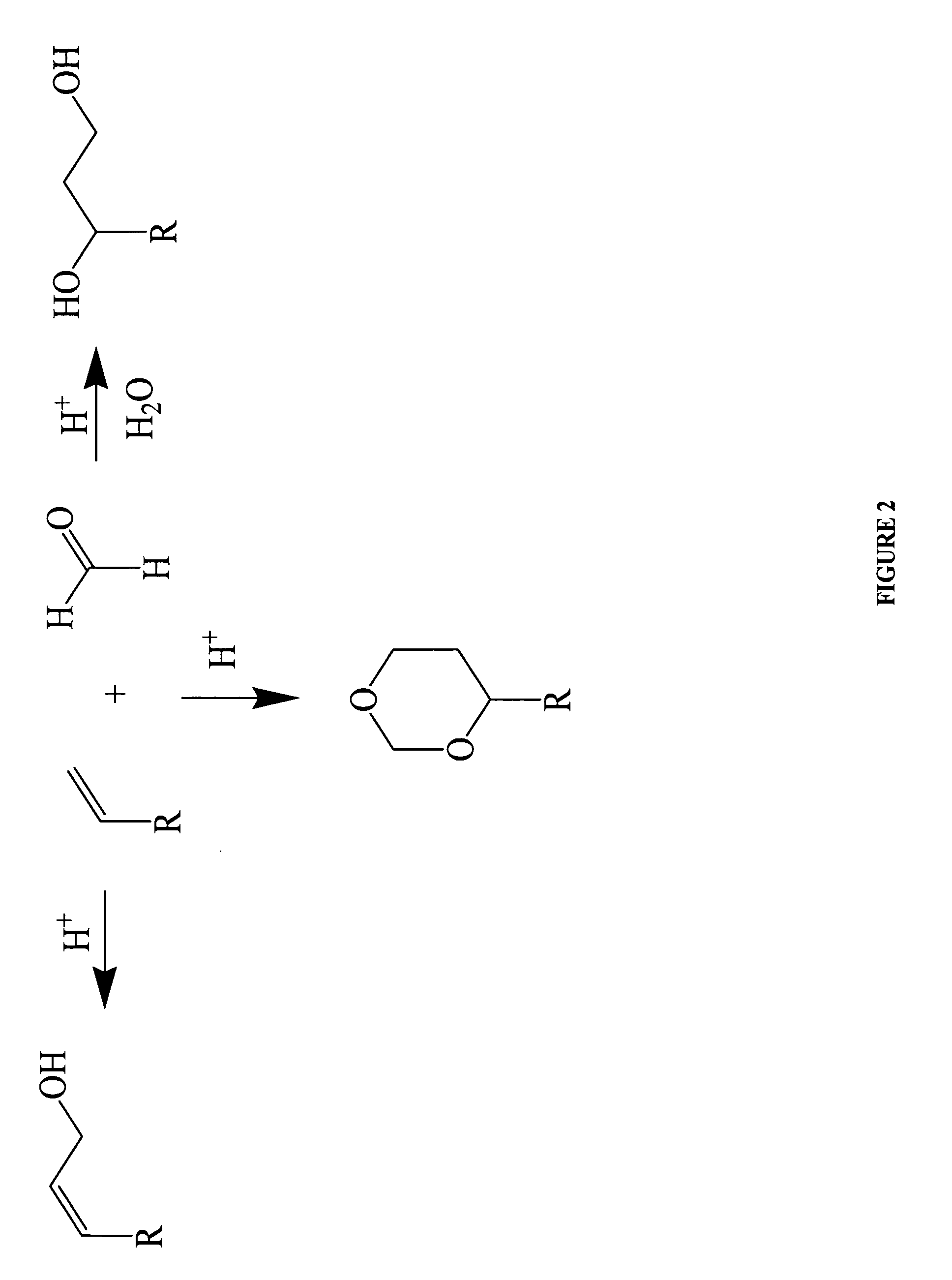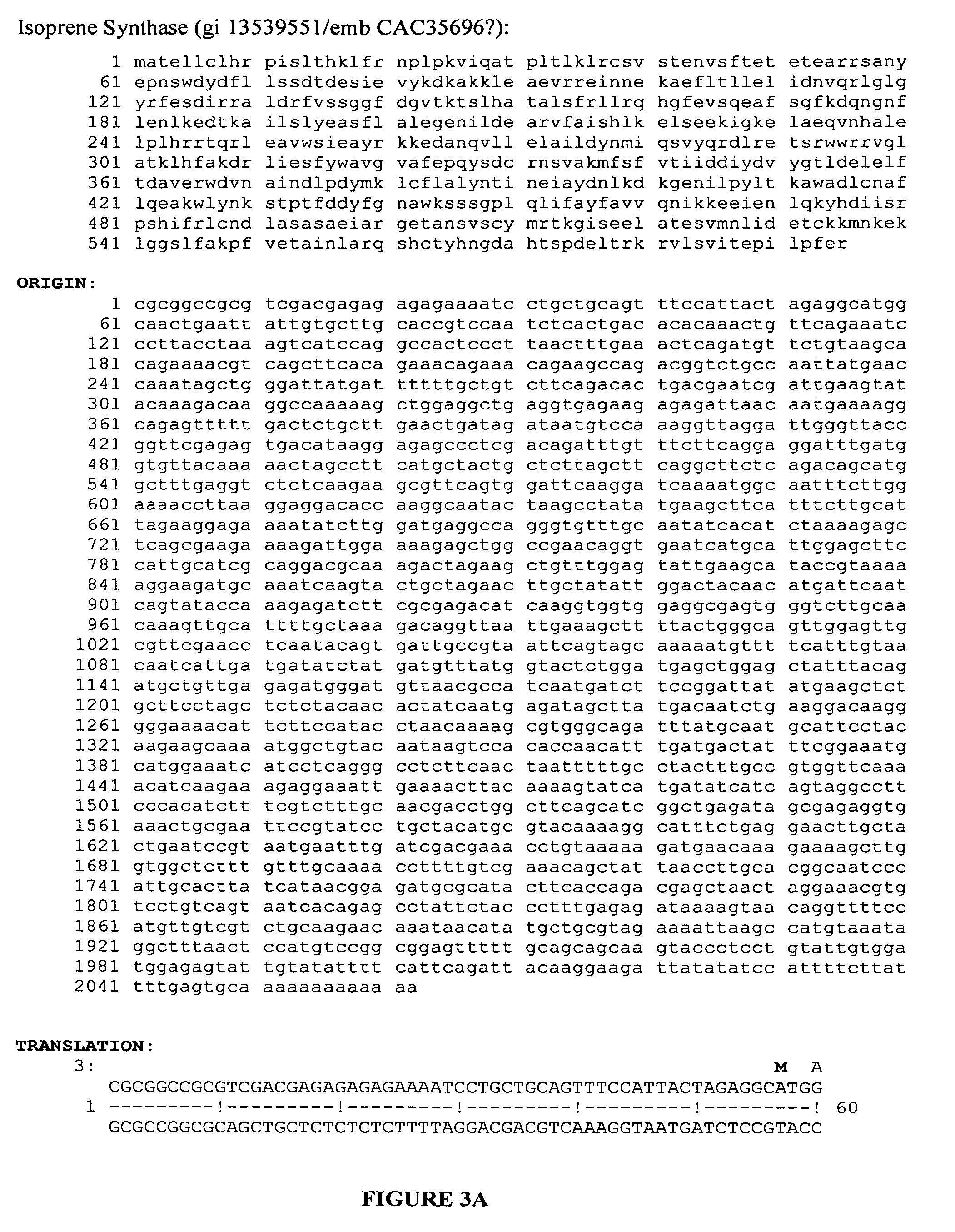Methods for The Direct Conversion of Carbon Dioxide Into a Hydrocarbon Using a Metabolically Engineered Photosynthetic Microorganism
a technology of photosynthesis and carbon dioxide, which is applied in the field of direct conversion of carbon dioxide into a hydrocarbon using a metabolically engineered photosynthetic microorganism, can solve the problems of increasing the cost of energy as well as these key hydrocarbon derivatives and their downstream products, and the raw material base, which is also used for animal feed and human needs, will not be sufficient to meet the increasing demand. , the effect of reducing the amount of isoprene production
- Summary
- Abstract
- Description
- Claims
- Application Information
AI Technical Summary
Benefits of technology
Problems solved by technology
Method used
Image
Examples
example 1
Synthesizing a Gene for Isoprene Synthase (v2.2)
[0080]A cDNA clone for isoprene synthase has been cloned from the poplar (Miller et al., 2001). Expression of this foreign gene in E. coli, and production of isoprene from the recombinant organism, has also been demonstrated (Miller et al., 2001). The class of enzymes to which isoprene synthase belongs, terpene cyclases, has been relatively well-studied (including determinations of the 3D structures of the homologs 5-epi-aristolochene synthase (Starks et al., 1997) and bornyl diphosphate synthase (Whittington et al., 2002)), which should greatly aid future protein engineering experiments aimed at optimizing the enzyme.
[0081]A gene encoding isoprene synthase is synthesized using the poplar sequence as a guide, but modifying the sequence to (a) provide optimized codons for expression in T. elongatus, (b) remove or insert certain restriction sites (e.g., sites recognized by the T. elongatus restriction enzyme system (Iwai et al., 2004) or...
example 2
Engineering Thermosynechococcus elongatus BP-1 to Express Isoprene Synthase
[0082]Thermosynechococcus elongatus BP-1 is a particularly favorable cyanobacteria strain with which to assess expression of isoprene synthase. There has been extensive characterization of the photosynthetic machinery of this microorganism (Rutherford and Boussac, 2004) and the complete DNA sequence of its genome has been determined and annotated (Nakamura et al., 2002). Moreover, transformation with plasmids via electroporation and expression of foreign genes has been demonstrated (Iwai et al., 2004). Thus, all the basic tools exist for metabolic engineering with T. elongatus. As a final advantage, T. elongatus has an optimal growth temperature of 55° C., more than 20° above the boiling point for isoprene, meaning that the kinetics of isoprene volatilization from the living cells should be extremely favorable, “pulling” the reaction forward.
[0083]The synthetic isoprene synthase gene is inserted into a vector...
example 3
Test Cultures
[0084]Test cultures of the recombinant strain on minimal medium containing trace elements but no carbon source (apart from CO2) are conducted to establish photosynthetic production of isoprene from carbon dioxide, according to three criteria: (i) detection of levels of off-gassed isoprene significantly higher than those found in the off-gas from non-recombinant control cells; (ii) demonstration of the light-inducibility and light-dependence of isoprene synthesis; and (iii) demonstration that the isoprene can be isotopically labeled by culturing the recombinant organism in the presence of 13CO2.
PUM
 Login to View More
Login to View More Abstract
Description
Claims
Application Information
 Login to View More
Login to View More - R&D
- Intellectual Property
- Life Sciences
- Materials
- Tech Scout
- Unparalleled Data Quality
- Higher Quality Content
- 60% Fewer Hallucinations
Browse by: Latest US Patents, China's latest patents, Technical Efficacy Thesaurus, Application Domain, Technology Topic, Popular Technical Reports.
© 2025 PatSnap. All rights reserved.Legal|Privacy policy|Modern Slavery Act Transparency Statement|Sitemap|About US| Contact US: help@patsnap.com



